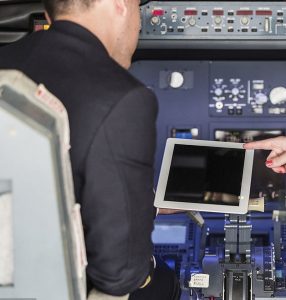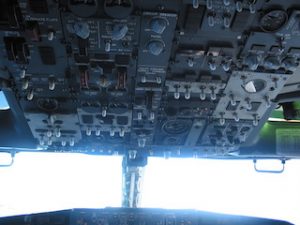How Pilots Use Bureau Of Meteorology
 The role of meteorological data in aviation is critical to ensuring safety, operational efficiency, and the overall comfort of passengers during a flight. Among the various institutions that provide essential weather information to pilots, the Bureau of Meteorology plays a central role. This Australian governmental agency is responsible for delivering high-quality, accurate, and timely weather forecasts and reports. Commercial airline pilots rely on this data throughout their flights, from pre-flight planning to in-flight adjustments and post-flight analysis. This article explores how commercial airline pilots utilize the functions of the Bureau of Meteorology while operating an aircraft, emphasising the critical contribution the Bureau makes to the aviation industry.
The role of meteorological data in aviation is critical to ensuring safety, operational efficiency, and the overall comfort of passengers during a flight. Among the various institutions that provide essential weather information to pilots, the Bureau of Meteorology plays a central role. This Australian governmental agency is responsible for delivering high-quality, accurate, and timely weather forecasts and reports. Commercial airline pilots rely on this data throughout their flights, from pre-flight planning to in-flight adjustments and post-flight analysis. This article explores how commercial airline pilots utilize the functions of the Bureau of Meteorology while operating an aircraft, emphasising the critical contribution the Bureau makes to the aviation industry.
Bureau of meteorology’s role in aviation
Bureau of meteorology is the national weather service in Australia. It provides a comprehensive range of weather services, including short-term weather predictions, long-term forecasts, and specific aviation-related reports. These reports cover everything from wind patterns and temperature forecasts to the identification of hazardous weather phenomena such as turbulence, thunderstorms, and icing conditions.
Aviation, in particular, relies heavily on weather data to ensure the safety and efficiency of air travel. Commercial airline pilots use weather information from the Bureau of Meteorology to guide flight planning, avoid dangerous conditions, and maintain optimal flight paths during their journeys. In this context, the Bureau’s services form an integral part of a pilot’s operational toolkit.
Pre-flight planning
The most important function of the bureau of meteorology for commercial airline pilots occurs during pre-flight planning. Before each flight, pilots must gather accurate weather data to ensure they understand the conditions they will encounter during the journey. The BoM offers various products that provide this essential information, including:
-
- Metar and TAF reports: The Bureau of Meteorology provides routine meteorological aviation reports such as METAR and TAF that offer real-time weather data and forecasts for airports around Australia. Pilots refer to these reports to determine key weather factors such as wind direction and speed, visibility, cloud cover, and temperature at the departure, en route, and destination airports. These reports can help pilots anticipate potential hazards like fog, thunderstorms, or low visibility that could affect takeoff, landing, and routing.
- Area forecasts: For en-route weather, pilots rely on the BoM’s area forecasts, which cover broader geographic regions. These forecasts offer valuable insight into predicted weather conditions for the route, including information on expected turbulence, cloud coverage, and significant weather events. These forecasts can inform decision-making about flight altitude, speed, and diversion routes if necessary.
- Winds aloft reports: Commercial pilots need to understand wind conditions at different altitudes to optimize fuel efficiency and flight time. The Bureau of Meteorology provides Winds Aloft reports that detail wind speeds and directions at various flight levels. This helps pilots plan for the most efficient altitude and flight route, taking into account headwinds and tailwinds.
- Satellite and radar images: For visualising larger weather systems, pilots access satellite and radar imagery, which are vital for identifying storms, cloud formations, and other large-scale weather patterns. These images help pilots recognize areas of severe weather, such as convective storms, that may require deviation from the planned flight path.
By reviewing these various reports and forecasts, pilots can determine the safest and most efficient way to fly. A thorough understanding of the expected weather conditions along the flight route is crucial for making decisions that affect not only the safety of the passengers but also the airline’s operational costs and efficiency.
In-flight decision making
Once airborne, pilots continue to rely on the bureau of meteorology’s services for real-time weather updates. Weather conditions can change rapidly during a flight, and pilots need to be able to respond quickly to mitigate any risks or disruptions.
-
- Weather radar systems: Modern commercial aircraft are equipped with onboard weather radar systems, which are used to detect and display precipitation patterns, turbulence, and storms. This system provides live data to pilots, but it is also supplemented by real-time weather updates from the Bureau of Meteorology. For example, pilots can receive updates about thunderstorms, wind shear, and other weather-related hazards along their flight path that may not yet be visible on the aircraft’s radar.
- En-route diversions: If the weather forecast changes unexpectedly or if dangerous conditions develop along the planned route, the Bureau of Meteorology provides critical information to help pilots make informed decisions about potential diversions. For instance, if a sudden thunderstorm develops along a route, or if the weather in an alternate airport changes, the Bureau of Meteorology will provide timely updates that enable the flight crew to adjust the course or request a diversion to a safer airport. This ensures that the flight can continue smoothly without encountering hazardous weather.
- Icing conditions and temperature alerts: The most critical weather hazard for pilots is the possibility of in-flight icing. Ice accumulation on aircraft surfaces can affect aerodynamics and, in extreme cases, lead to flight control issues. The Bureau of Meteorology provides temperature alerts that help pilots assess the risk of ice formation at different altitudes. By continuously monitoring temperature changes and weather patterns, pilots can adjust their flight altitude to avoid ice buildup, ensuring the aircraft remains safe and operational.
- Turbulence reports: Turbulence is one of the most common in-flight weather-related issues, and pilots are trained to manage it when encountered. The bureau of meteorology provides pilots with information about expected turbulence levels along the flight path. This includes updates on clear-air turbulence, which occurs without any visible signs, such as thunderstorms. Knowing where turbulence is expected helps pilots adjust the altitude or flight path to ensure a smoother and safer flight for passengers.
- SIGMET: The bureau of meteorology also issues SIGMETs, which provide warnings about potentially hazardous weather phenomena, including severe turbulence, thunderstorms, volcanic ash, and other extreme conditions. These reports are crucial for pilots during the flight as they help detect changing weather patterns that might pose a serious risk to the aircraft. Pilots are trained to interpret and act on SIGMETs promptly to ensure they can avoid dangerous conditions in real-time.
Post-flight weather analysis
After a flight has been completed, pilots often review the weather conditions they encountered during the journey. This post-flight analysis, which often involves reviewing data provided by the Bureau of Meteorology, helps airlines refine flight operations and improve safety protocols. By studying the weather data from the Bureau of Meteorology, airlines can identify areas where improvements can be made, such as route planning, altitude management, and contingency planning for future flights.
The BoM also collects data on flight-related weather incidents and shares this information with relevant aviation safety bodies. This data helps refine forecasts and improve weather prediction accuracy over time, contributing to long-term safety improvements in the aviation industry.
Bureau’s collaboration with other agencies
The bureau of meteorology is not the only entity providing weather data to commercial pilots, but it is an essential part of a wider network of meteorological services. The BoM collaborates closely with other aviation agencies, such as the civil aviation safety authority, air traffic control, and international meteorological organisations. This cooperation ensures that pilots receive the most comprehensive and up-to-date weather information possible.
Additionally, the bureau of meteorology works with international weather agencies to provide global weather data, particularly for long-haul international flights. For flights that travel outside of Australian airspace, pilots rely on weather data from other meteorological agencies, but the Bureau ensures that all relevant data is integrated and available to pilots for smooth flight operations.
Bureau of meteorology’s role in safety
The functions of the bureau of meteorology are indispensable for commercial airline pilots as they navigate the skies. From pre-flight planning to in-flight decision-making and post-flight analysis, the accurate, timely, and reliable weather data provided by the Bureau ensures that pilots can operate aircraft safely and efficiently. Whether it’s monitoring the weather conditions along a flight route, avoiding turbulence, or managing the risks of in-flight icing, the Bureau of Meteorology’s comprehensive range of weather services is central to modern aviation safety.
As the global aviation industry continues to evolve, so too will the role of meteorology in supporting flight operations. The Bureau of Meteorology, with its constant innovation and dedication to providing high-quality weather information, will remain a key partner to pilots, airlines, and the aviation industry as a whole. By continuing to refine its services and working closely with international meteorological organizations, the Bureau ensures that commercial aviation can meet the growing demands of safety, efficiency, and sustainability in a rapidly changing world.
Understanding the integral role of the Bureau of Meteorology is essential not only for pilots but also for passengers and anyone involved in aviation. The accuracy of weather data directly impacts flight schedules, safety protocols, and passenger experience—making the Bureau of Meteorology’s contributions a vital part of the aviation ecosystem.










